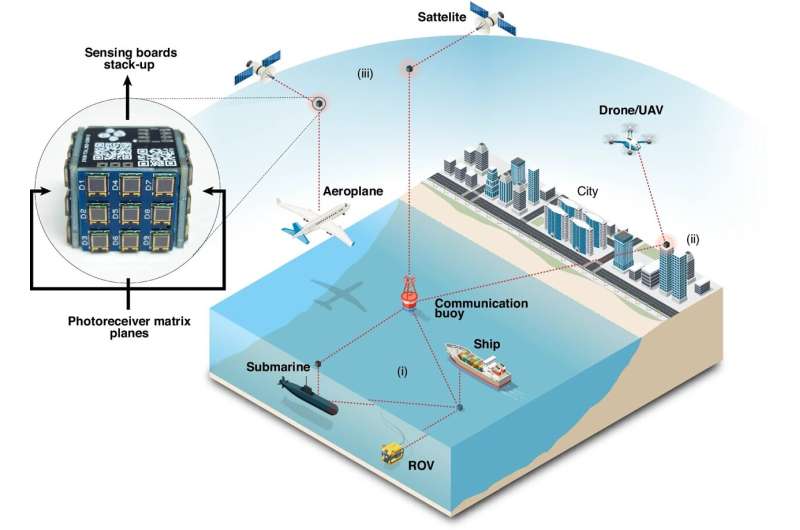This article has been reviewed according to Science X's editorial process and policies. Editors have highlighted the following attributes while ensuring the content's credibility:
fact-checked
peer-reviewed publication
trusted source
proofread
Researchers develop reconfigurable MIMO-based self-powered battery-less light communication system

In a new paper published in Light: Science & Application, a team of scientists, led by Professor Khaled Salama from King Abdullah University of Science and Technology, and co-workers have developed a reconfigurable simultaneous lightwave information and power transfer (SLIPT) system using a MIMO-based configuration that addresses the limitations of existing optical wireless communication (OWC) systems of photodiodes (PD), designed to decode information from multiple light beams simultaneously while also harvesting energy.
This dual capability is crucial for powering remote Internet of Things (IoT) devices, facilitating continuous operation without the need for external power sources. Their approach uniquely combines space- and time-domain SLIPT with a PD matrix, where the PDs can also be configured to track light beams, leading to the mitigation of problems like beam wandering and misalignment.
Achieving a maximum gross data rate of 25.7 Mbps from a single-input single-output (SISO) and an 85.2 Mbps net data rate in a MIMO configuration, their results surpassed expectations, demonstrating high-speed communication and efficient energy harvesting in real-world scenarios.
The system can operate in real-time without a battery as a power source, operating solely from harvested energy, achieving 5 Mbps in ultra-low-power mode. This achievement provides a viable proof-of-concept that integrates high data rates with self-sustaining power capabilities, essential for autonomous IoT devices and applications in harsh environments, including space.
The study details two primary operational modes: single PD mode and quadrant PD mode. In single PD mode, the system prioritizes energy harvesting by utilizing one PD for data reception and the remainder for power generation, suitable for scenarios where energy availability is critical.
Quadrant PD mode, conversely, emphasizes data transfer, allocating up to four PDs for receiving data. This mode increases the data rate but reduces the total power harvested, demonstrating a trade-off that can be managed based on specific application needs. The seamless switching between these modes is managed via an embedded control system allowing dynamic adaptation and efficiency.
These results imply significant advancements in next-generation communication and energy harvesting systems, showcasing the feasibility of high-speed, energy-efficient optical communication that can be self-powered. Future work includes miniaturizing the hardware, enhancing bandwidth and energy efficiency, and exploring flexible substrates and micro-PD arrays for omnidirectional applications. The authors also plan to further develop a wavelength-based SLIPT approach to enhance system versatility and performance.
More information: Jose Ilton De Oliveira Filho et al, Reconfigurable MIMO-based self-powered battery-less light communication system, Light: Science & Applications (2024). DOI: 10.1038/s41377-024-01566-3















